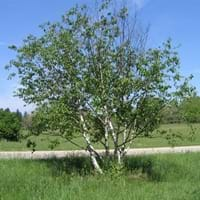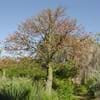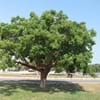Life Span
Annual
Perennial
Origin
North America, Northeastern United States, North-Central United States, Alaska, Canada
North America, United States, Northeastern United States, Mid-Atlantic United States, Southeastern United States, North-Central United States, South-Central United States, Texas
Types
Ornamental Tree
not available
Habitat
Slopes, Swamps
Boggy areas, Fens, Fields, meadows, Swamps, Woodlands
USDA Hardiness Zone
2-7
4-9
Sunset Zone
A1, A2, A3, 1a, 1b, 2a, 2b, 3a, 3b, 4, 5, 6
1a, 1b, 2a, 2b, 3a, 3b, 4, 5, 6, 7
Habit
Oval or Rounded
Thicket/Colonizing
Flower Color
Yellow
Not Available
Flower Color Modifier
Bicolor
Not Available
Leaf Color in Spring
Light Green
Not Available
Leaf Color in Summer
Dark Green
Not Available
Leaf Color in Fall
Light Yellow, Gold
Not Available
Leaf Color in Winter
Not Available
Not Available
Leaf Shape
Egg-shaped
Oblovate
Plant Season
Spring, Summer, Fall, Winter
Spring, Fall, Winter
Sunlight
Full Sun, Partial Sun
Full Sun, Partial Sun
Growth Rate
Medium
Medium
Type of Soil
Loam, Sand
Clay, Loam
The pH of Soil
Acidic, Neutral
Acidic, Neutral, Alkaline
Soil Drainage
Well drained
Average
Bloom Time
Spring
Late Spring
Tolerances
Not Available
Not Available
Where to Plant?
Ground
Ground, Pot
How to Plant?
Stem Planting
Divison, Seedlings
Plant Maintenance
Medium
Medium
Watering Requirements
Requires regular watering
Keep the ground moist but not water-logged
In Summer
Lots of watering
Lots of watering
In Spring
Moderate
Moderate
In Winter
Average Water
Average Water
Soil pH
Acidic, Neutral
Acidic, Neutral, Alkaline
Soil Type
Loam, Sand
Clay, Loam
Soil Drainage Capacity
Well drained
Average
Sun Exposure
Full Sun, Partial Sun
Full Sun, Partial Sun
Pruning
Remove damaged leaves, Remove dead branches, Remove dead leaves
Prune after flowering, Prune in early spring, Remove damaged leaves, Remove dead branches, Remove dead leaves
Fertilizers
All-Purpose Liquid Fertilizer
All-Purpose Liquid Fertilizer, Compost, Fertilize every year, Mulch, Nitrogen
Pests and Diseases
Red blotch
Aphids, Apple Maggot, Fall Webworm, Red blotch, Scale
Plant Tolerance
Drought
Not Available
Flower Petal Number
Not Available
Not Available
Foliage Texture
Medium
Not Available
Foliage Sheen
Glossy
Not Available
Attracts
Not Available
Birds
Allergy
Not Available
Not Available
Aesthetic Uses
Showy Purposes
Showy Purposes
Beauty Benefits
Not Available
Not Available
Edible Uses
Sometimes
Yes
Environmental Uses
Air purification
Air purification
Medicinal Uses
Cold, Cough, Gout, Laxative, Rheumatism, Wounds
Not Available
Part of Plant Used
Leaves, Wood
Fruits
Other Uses
Animal Feed, Sometimes used for making wine
Used As Food, Used as Ornamental plant
Used As Indoor Plant
No
No
Used As Outdoor Plant
Yes
Yes
Garden Design
Feature Plant, Shade Trees
Cutflower, Mixed Border, Screening, Wind Break
Botanical Name
BETULA papyrifera
ARONIA arbutifolia
Common Name
Paper Birch
Red Chokeberry
In Hindi
Paper birch
लाल Chokeberry
In German
Papierbirke
Rote Apfelbeere
In French
Le bouleau à papier
Red Chokeberry
In Spanish
abedul de papel
rojo Chokeberry
In Greek
σημύδα χαρτί
κόκκινο Chokeberry
In Portuguese
vidoeiro de papel
Red Chokeberry
In Polish
brzoza papieru
Red aronii
In Latin
Paper betula
arbutifolia
Phylum
Magnoliophyta
Magnoliophyta
Class
Magnoliopsida
Magnoliopsida
Family
Betulaceae
Rosaceae
Clade
Angiosperms, Eudicots, Rosids
Angiosperms, Eudicots, Rosids
Tribe
Not Available
Not Available
Subfamily
Not Available
Not Available
Number of Species
Not Available
Not Available
Season and Care of Paper Birch and Red Chokeberry
Season and care of Paper Birch and Red Chokeberry is important to know. While considering everything about Paper Birch and Red Chokeberry Care, growing season is an essential factor. Paper Birch season is Spring, Summer, Fall and Winter and Red Chokeberry season is Spring, Summer, Fall and Winter. The type of soil for Paper Birch is Loam, Sand and for Red Chokeberry is Clay, Loam while the PH of soil for Paper Birch is Acidic, Neutral and for Red Chokeberry is Acidic, Neutral, Alkaline.
Paper Birch and Red Chokeberry Physical Information
Paper Birch and Red Chokeberry physical information is very important for comparison. Paper Birch height is 1,520.00 cm and width 760.00 cm whereas Red Chokeberry height is 180.00 cm and width 12.70 cm. The color specification of Paper Birch and Red Chokeberry are as follows:
Paper Birch flower color: Yellow
Paper Birch leaf color: Light Green
Red Chokeberry flower color: Not Available
- Red Chokeberry leaf color: Not Available
Care of Paper Birch and Red Chokeberry
Care of Paper Birch and Red Chokeberry include pruning, fertilizers, watering etc. Paper Birch pruning is done Remove damaged leaves, Remove dead branches and Remove dead leaves and Red Chokeberry pruning is done Prune after flowering, Prune in early spring, Remove damaged leaves, Remove dead branches and Remove dead leaves. In summer Paper Birch needs Lots of watering and in winter, it needs Average Water. Whereas, in summer Red Chokeberry needs Lots of watering and in winter, it needs Average Water.





